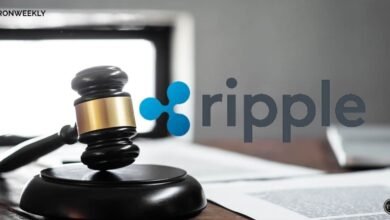US Dollar prolongs losses despite strong PPI data

- US Dollar continues losing ground in light of weak CPI figures and UoM data.
- Markets still foresee a September rate cut.
- Despite hot PPI data, US Treasury yields are falling, diminishing allure of USD.
The US Dollar Index (DXY) remains weak on Friday, sitting at April lows. This is largely a response to the soft US Consumer Price Index (CPI) figures on Thursday, combined with softer University of Michigan (UoM) sentiment data, both supporting the prospect of a Federal Reserve (Fed) rate cut in September.
Although the market’s confidence in a pending rate cut is growing, Fed officials have maintained a careful approach, emphasizing their dependence on rigorous data analysis before initiating such substantial changes.
Daily digest market movers: DXY wanes despite rising PPI
- US Producer Price Index (PPI) for final demand rose to 2.6% YoY in June, an increase from 2.2% last month, as revealed by the US Bureau of Labor Statistics (BLS) on Friday. This outcome exceeded market expectations of 2.3%.
- Annual core PPI increased by 3% during the same period, surpassing both the previous month’s rise and the anticipated market figure of 2.3%.
- On a monthly basis, PPI and core PPI escalated by 0.2% and 0.4%, respectively.
- Despite positive PPI data, soft CPI figures and softer UoM sentiment data (reported at 66.0 versus the forecast of 68.5 and the previous value of 68.2) continue to bolster the argument for a September rate cut.
- CME FedWatch Tool now shows an 86% probability of a 25-basis-point cut in September, and some investors bet on a 50-basis-point cut
DXY technical outlook: Bearish sentiment worsens as DXY breaches 200-day SMA
The DXY Index’s breach of its 200-day Simple Moving Average (SMA) has intensified the negative outlook for the USD, with indicators including the Relative Strength Index (RSI) and the Moving Average Convergence Divergence (MACD) still deep in a negative trajectory.
The index now trades at its lowest level since April, amplifying the bearish sentiment. But after losing more than 0.80% in just two sessions, a slight upward correction may be possible. However, the overall technical outlook remains bearish.
Interest rates FAQs
Interest rates are charged by financial institutions on loans to borrowers and are paid as interest to savers and depositors. They are influenced by base lending rates, which are set by central banks in response to changes in the economy. Central banks normally have a mandate to ensure price stability, which in most cases means targeting a core inflation rate of around 2%. If inflation falls below target the central bank may cut base lending rates, with a view to stimulating lending and boosting the economy. If inflation rises substantially above 2% it normally results in the central bank raising base lending rates in an attempt to lower inflation.
Higher interest rates generally help strengthen a country’s currency as they make it a more attractive place for global investors to park their money.
Higher interest rates overall weigh on the price of Gold because they increase the opportunity cost of holding Gold instead of investing in an interest-bearing asset or placing cash in the bank. If interest rates are high that usually pushes up the price of the US Dollar (USD), and since Gold is priced in Dollars, this has the effect of lowering the price of Gold.
The Fed funds rate is the overnight rate at which US banks lend to each other. It is the oft-quoted headline rate set by the Federal Reserve at its FOMC meetings. It is set as a range, for example 4.75%-5.00%, though the upper limit (in that case 5.00%) is the quoted figure. Market expectations for future Fed funds rate are tracked by the CME FedWatch tool, which shapes how many financial markets behave in anticipation of future Federal Reserve monetary policy decisions.
Information on these pages contains forward-looking statements that involve risks and uncertainties. Markets and instruments profiled on this page are for informational purposes only and should not in any way come across as a recommendation to buy or sell in these assets. You should do your own thorough research before making any investment decisions. FXStreet does not in any way guarantee that this information is free from mistakes, errors, or material misstatements. It also does not guarantee that this information is of a timely nature. Investing in Open Markets involves a great deal of risk, including the loss of all or a portion of your investment, as well as emotional distress. All risks, losses and costs associated with investing, including total loss of principal, are your responsibility. The views and opinions expressed in this article are those of the authors and do not necessarily reflect the official policy or position of FXStreet nor its advertisers. The author will not be held responsible for information that is found at the end of links posted on this page.
If not otherwise explicitly mentioned in the body of the article, at the time of writing, the author has no position in any stock mentioned in this article and no business relationship with any company mentioned. The author has not received compensation for writing this article, other than from FXStreet.
FXStreet and the author do not provide personalized recommendations. The author makes no representations as to the accuracy, completeness, or suitability of this information. FXStreet and the author will not be liable for any errors, omissions or any losses, injuries or damages arising from this information and its display or use. Errors and omissions excepted.
The author and FXStreet are not registered investment advisors and nothing in this article is intended to be investment advice.




